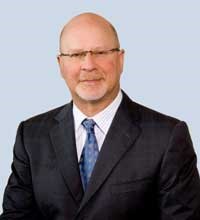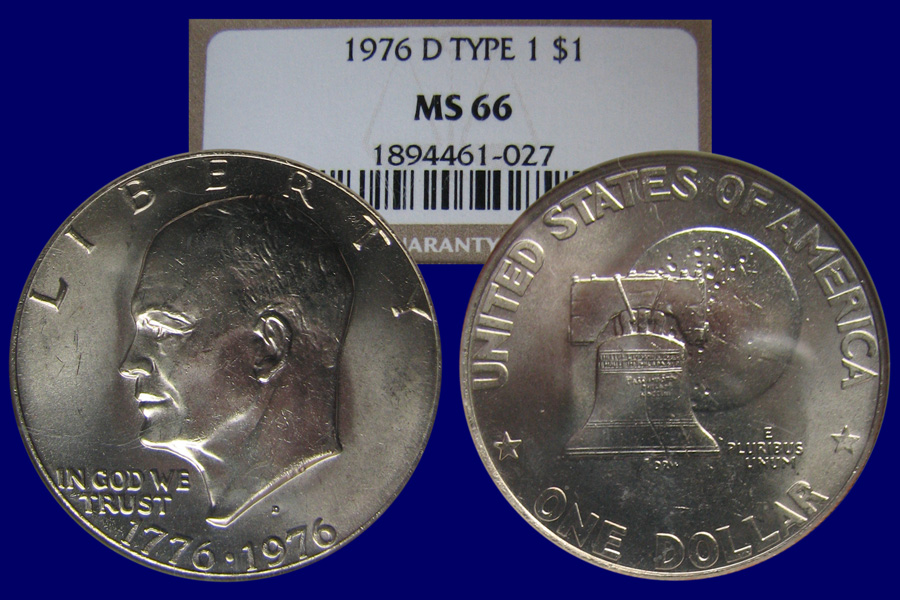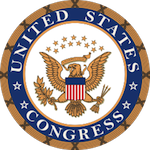Happy Thanksgiving 2016
All in a Word
- Poem courtesy of teachingfirst.net.
- Coin images courtesy of the U.S. Mint.
In 1916, the U.S. Mint began to circulate three iconic coin designs that remain favorites amongst collectors. To celebrate, the U.S. Mint issued 24-karat gold centennial versions of the Mercury Dime, Standing Liberty Quarter, and Walking Liberty Half-Dollar. The designs of the coins are the same as their century-old counterparts except the gold specification was added. Earlier this month, the U.S. Mint released the 2016-W Walking Liberty Half-Dollar 24-karat gold coin to complete the series.
With the release of the gold Walking Liberty Half-Dollar, every coin design that was part of President Theodore Roosevelt’s “pet crime” that has gone out of circulation, except the Bela Lyon Pratt quarter and half-eagles and the Saint-Gaudens $10 eagle, have been reproduced at least once. Only Victor D. Brenner’s Lincoln Head Cent design remains in circulation even though the reverse has been redesigned a few times.
Isn’t it time we move on?
Let’s forget the legal limitations placed on the U.S. Mint that only allows them to do a tribute like this in gold even though the original coins were struck in silver, how many collectors are really interested in buying these coins? How many can afford these coins?
Judging by the listings for online auctions and dealers that specialize in modern precious metals, it seems that the alleged sellout of the gold Mercury Dime was because of speculation. While there will always be some opportunists in any market, the appearance of the churn in that market feels more like people looking to make money rather than collect, especially since its $209 issue price is more affordable.
Now, both the Standing Liberty and Walking Liberty gold coins are still available. With the limited availability, why aren’t collectors buying these coins?
Aside from the cost of a gold coin, how many younger collectors or even those that are a part of Generation X have any connection to those coins? It is possible we Baby Boomers have seen these coins in circulation, even sparingly. I was able to find Mercury dimes and Buffalo nickels as late as the very early 1970s before they were all removed from circulation. My interest in collecting started when I found Indian Head cents in pocket change.
I am not saying that these designs are unworthy of a tribute. As a collective, they are arguably the most iconic designs of U.S. coinage. But what many consider the best of the best will live on as part of the American Eagle, Buffalo 24-karat, and the soon-to-be palladium bullion programs.
Isn’t it time we move on?
Sales of mint and proof sets are down. Sales of commemorative coins are not meeting expectations where only a few have been sellouts. And the only modern coin that has seen any respect from the Baby Boomer and older collecting community was the 2014 50th Anniversary Kennedy Half Dollar gold coin.
It is time we move on.
The 115th congress will be sworn into office on January 3, 2017. Giving the congress time to get settled including my representative who will be entering his first term in the House, I will write to him to propose a that a silver program similar to the 24-karat gold program be created. Maybe, if coins are offered in silver, a more affordable metal, we can use those coins to generate additional interest in collecting.
It may not be much, but it is a start!

NGC Chairman Mark Salzberg
In the past, NGC would accept coins graded by Professional Coin Grading Service in the registry. They did this while PCGS only accepted their own coins. This created a lot of options for collectors. Many of the registry collectors have tried to use only NGC-graded coins as a source of pride. Others have been looking for the best coin for their sets.
I had started a few registry sets based on the 1975-76 Bicentennial coins. After a few years, I had stopped working on the set while other things took priority. Since I had not looked in a while, it appears that overall, I rank 4,653 with a total 12,050 points. While I know that the point values change based on population, I am not sure how this has changed. What has not changed is my America’s Bicentennial Celebration set, a 1776-1976 Clad Mint Set. According to NGC, the set is still ranked THIRD in this category with a score of 3,883 points.
During the last few years, I have divested many of the coins I purchased for registry sets except for the Bicentennial coinage.
As part of the change, Salzberg’s letter said that coins from “other services” that have been added prior to the change will be allowed to remain. In this case, the other services would be PCGS since it was the only service allowed in registry sets. Salzberg said that there will be no point deductions for those coins.

At 949 registry points, this coin scores the most points in the America’s Bicentennial Mint Registry Set
Unfortunately, I must have missed something because while looking at my sets, my 1776-1976 Silver Mint Set should be a top set but is made up of all PCGS coins. If PCGS coins are still allowed, then why are these coins not counted? Time to sent NGC a note and ask!
Frankly, I am surprised NGC has waited this long to make this change. As the quality of the coins and the number of people participating in registry sets have increased, NGC should have considered this move a few years ago. After all, PCGS does not accept NGC-certified coins in their registry.
In thinking about the competition between the two services, it is interesting that Salzberg noted that there will be some who will be upset “but I cannot continue to allow coins graded by companies whose standards do not match those of NGC.” Since the only non-NGC graded coins allowed in the sets are from PCGS, is this a commentary on PCGS?
Aside from questions that caused the formation of the Certified Acceptance Corporation as the “third-party grading service verifier,” or a fourth-party grading service, there have been some that claim PCGS has lowered their standards to grade more coins at higher grades to make their service more attractive. One dealer pointed out that it was once very rare to submit American Eagle bullion coins to PCGS and receive more than 5-percent graded as a 70 (perfect). Now, if at least 25-percent do not come back with a 70 grading he wonders if there was something wrong.
Another dealer pointed to high-profile online dealers who pre-sell 70 graded coins from both services. How do they know that the services are going to be able to supply these companies with the appropriate inventory? One said that they expect a certain number to come back with the perfect grade based on a percentage of what is submitted, noting that it is easier to predict.
I have no problems with registry set collecting, competition, or NGC only allow coins they graded in their competition. It is their Registry Service and they can set whatever rules they want. I now have to consider whether I want to try to cross-over the PCGS coins or buy new coins.
We all have our bromides we use to describe Mondays. We have a love-hate relationship with Mondays. Those who love Mondays see it as a new beginning and to start the week on a high note. Others see is as another week of more of the same and another way for things to get worse.
As for me, I make sure I get enough coffee so that I can make it through just about anything.
Rather than dwell on the fact it is Monday and that there is a lot of news even before the day begins, I would rather start with something better. Prettier. More pleasing than anything else. I give you the 2016 Panda silver bullion coin just added to my collection.
The People’s Bank of China, through its subsidiary Panda Gold Coin, have been striking bullion coins with the image of a panda since 1982. Up until 1999, the images have been almost cartoon-like in nature. Starting in 2000, they hired a new artist who turned the panda image into a fantastic work of art.
The skill of the artist and die makers combine matte and shiny images with fine details to come up with an image that not only endures but keeps these coins selling at a premium. Even with their higher mintages since 2010, I have seen sales of the silver coin up to three-times its original sale value.
Making it more of an interesting coin if you want to collect and have a nice investment is that even with the weight change in 2015. Prior to 2015, the coin was made of one troy ounce of silver or about 31.1 grams. Starting in 2015, the coin was struck using 30 grams of silver.
When the change was discovered after not being officially announced, the industry was up in arms. Why? Because some felt they were being short-changed on 1.1 grams of silver for the same price, sort of like paying for 12 ounces of coffee that comes in the same 16-ounce can (I remember back when that was a newsworthy topic). At the current price spot price of $18.41 per troy ounce, 1.1 grams of silver is only 65-cents.
Somehow, I don’t think 65-cents is going to make a difference in the beauty of the coin.
Rather than worry about 1.1 grams of silver, I just love the coins and was able to purchase one this weekend. As for Monday, I would rather look at the beauty of the panda climbing out on a limb than whatever limb I end up climbing!
 The Federal Trade Commission (FTC) published the “Final Rule of its Rules and Guidelines” for enforcing the Hobby Protection Act (16 CFR Part 304) to include the provisions of the Collectible Coin Protection Act (Pub. L. 113-288) that was signed into law by President Obama on December 19, 2014.
The Federal Trade Commission (FTC) published the “Final Rule of its Rules and Guidelines” for enforcing the Hobby Protection Act (16 CFR Part 304) to include the provisions of the Collectible Coin Protection Act (Pub. L. 113-288) that was signed into law by President Obama on December 19, 2014.
It is the job of the FTC to provide support to enforce the Hobby Protection Act. When updates are made to the law, such as the Collectible Coin Protection Act, the FTC is required to figure out how they will implement the law. Executive agencies, like the FTC, is required to write regulations that conform with the law and legal precedent, announce them to the public, allow for public comment, and then publish the file rule.
On October 14, 2016, the final rules that the FTC will use to enforce the Hobby Protection Act was published in the Federal Register (81 FR 70935). Since this is the final rule, the section begins with explanations and commentary about the information received from the public comments.
What appears to be troubling is that the FTC rejected comments from noted numismatists that there should be a rule to cover the manufacturing of fantasy coins. Fantasy coins are those that were not manufactured by the U.S. Mint. An example cited was the manufacturing of a 1964-D Peace Dollar “FANTASY” since the coins were never officially manufactured. Although the coins were struck, they were considered trial strikes and subsequently destroyed.
Daniel Carr is a mechanical engineer who also studied computer graphics and later turned it into an art career. He had entered U.S. Mint sponsored competitions for coin designs that have been used on commemorative coins. Carr is the designer of the New York and Rhode Island state quarters and his design was used as the basis of the Maine state quarter.
Carr had bought surplus coining machines from the Denver Mint, repaired them, and had been using them to strike fantasy coins. One of his fantasy coins was the 1964-D Peace Dollar. Over 300,000 coins were struck in 1965 at the Denver Mint anticipating its circulation only to be destroyed after congress disapproved of the way the Mint was allegedly handing the program. Some believe that some coins have survived, much like the 1933 Saint-Gaudens Double Eagle. But like that famed double eagle, it would spark a legal battle if a coin would surface.
Capitalizing on the story, Carr struck his own versions with varieties, errors, and finishes. He sold them as fantasy coins but were not marked in any way. Advertising and writings from Carr explicitly call them fantasy coins, but what about future sellers?
FTC claims it is not necessary to amend the rules “because it can address specific items as the need arises” The FTC further states they have “addressed whether coins resembling government-issued coins with date variations are subject to the Rules.” Using past precedent, the FTC concludes “such coins should be marked as a ‘COPY’ because otherwise they could be mistaken for an original numismatic item.”
Many numismatic industry experts who have seen how Chinese counterfeits have damaged the hobby, wanted the FTC the rule codified so that it would force someone like Daniel Carr to mark his fantasy pieces appropriately. Carr continues to manufacture fantasy pieces based on designs of actual coins changing the date. Recently, Carr has produced Clark Gruber fantasy products with modern dates without the word “COPY” imprinted on the coin.
While Clark Gruber gold pieces were never legal tender, there were allegedly pattern pieces of Presidential dollars that included the required inscriptions and included a denomination. There was no indication on the coins that they were not legal tender even though Carr marketed them as medallions.
The purpose of the CCPA was to prevent counterfeit coins from misleading the public. Carr has allegedly jumped over that line joining the Chinese counterfeiters in an effort that will mislead the public with the apparent blessing of the FTC.
Sources I contacted were not encouraged by the FTC action. It was noted that when Carr’s 1964-D Peace fantasy dollars were reported, the FTC did not take action.
The new rules go into effect on November 16, 2016.

Cubs numismatic collectibles can be purchase from the Highland Mint or MLBShop.com
In a comment about a technical issue, I was trying to explain that something would not work and exclaimed, “That isn’t worth two-bits.”
To the few people in the room within my age group, they understood what I said. Those younger than being eligible for AARP and those born outside of the United States did not understand. Since it is more blessed to give rather than receive, it gave me the opportunity to teach someone about the origin of money in the United States.
When the colonies were settled, George I was the King of England. Although the king ruled from an ocean away, the governors sent to manage the colonies on his behalf were under strict orders to not allow the colonists to coin money. An exception was made during a small period in the 17th century, colonists had to make due with the low-value copper coinage the king and his governors allowed.
Even with a standing army in the colonies, the governors could not control the commerce. Instead, they applied duties and fees for allowing the colonists to trade with the rest of the Western Hemisphere. Notice that there were no taxes because only the king could tax the royal subjects. Governors could levy duties to run the colonies. They also took kickbacks and bribes in order to get their way.
Although the Pound Sterling was the coin of the realm it was not available to the colonies. Instead, trading posts accepted the 8 reales coin, also known as the Thaler or Spanish Milled Dollar, as payment for goods and services. With the trade of high-cost goods like tobacco, cotton, and hides caught in the Appalachian Mountains the colonies relied more on the Spanish Milled Dollar than on the copper British coins.
Colonial governors ignored the growing economy, as they were able to satisfy the companies that sponsored the settlements and paid the taxes while lining their pockets. Colonists were able to make do with what was left.
A problem came about that everything could not be worth 8 reales and without subsidiary coinage, it was impossible to give change. Using the silver value of the coin, people would cut the coin into pieces in order to make subsidiary coinage. A milled dollar cut in half was a half-dollar. That half-dollar cut in half was a quarter-dollar and the quarter-dollar cut in half was called a bit.
The bit was the basic unit of commerce since prices were based on the bit. Of course, this was not a perfect solution. It was difficult to cut the quarter-dollars in half with great consistency which created problems when the bit was too small, called a short bit. Sometimes, goods or services would be adjusted to accommodate the short bit. Other times, short bits were supplemented with the English pennies that were allowed to circulate in the colonies.
Getting back to our adage, two bits were made from a quarter-dollar. Saying something was not worth two bits was either a negotiating tactic or someone wanted to use a short bit to pay for an item. Like many adages that have origins in the 17th and 18th centuries, the reason for their existence has been lost with time.
But arguing about its origin would be rocking the boat. We do know that some of our colonial ancestors should have measured twice and cut once to avoid the problem. But alas, there is no sense crying over spilled milk.
 Hello from Philadelphia!
Hello from Philadelphia!
I am in Philadelphia to attend the U.S. Mint’s Numismatic Forum. According to the U.S. Mint, “The purpose of the event is to gather leaders and stakeholders of the numismatic community to explore ways to stimulate and revitalize the hobby. As we approach the U.S. Mint’s 225th anniversary next year, we hope this unique opportunity to examine and discuss the Mint’s past, present and future will help move all the elements of the numismatic industry forward.”
I do not know who will be there but I am sure that I will see many of the regulars of the numismatic community. From the U.S. Mint, we will probably hear from the current Principal Deputy Director Rhett Jeppson and others from the Mint’s staff. Here is an overview of the schedule:
For those of you who will not be there and would like to follow along, you can follow @coinsblog on Twitter as I send out periodic updates. The widget on the upper-right side of the page can also be used to follow the progress. Also, when I can post pictures, they will be copied to the Pinterest on the board “Numismatic Forum” or watch the widget below.
Of course, there will be a report posted over the weekend!
Cash seems to be the new 4-lettered word.
 In February, former Treasury Secretary Lawrence Summers authored an opinion article that appeared in The Washington Post calling for the end of high-denomination banknotes. Summers cites a paper that claims to make a compelling case to stop issuing high denomination notes and possibly withdraw them from circulation because of its use in crime and corruption because large denominations are easier to carry. The paper claims that criminals have nicknamed the €500 note the “Bin Laden.”
In February, former Treasury Secretary Lawrence Summers authored an opinion article that appeared in The Washington Post calling for the end of high-denomination banknotes. Summers cites a paper that claims to make a compelling case to stop issuing high denomination notes and possibly withdraw them from circulation because of its use in crime and corruption because large denominations are easier to carry. The paper claims that criminals have nicknamed the €500 note the “Bin Laden.”
Last May, the European Central Bank announced will stop printing the €500 banknote by the end of 2018 when the €100 and €200 banknotes of the Europa series are planned to be introduced. Although the announcement did not quote the Summers article, the announcement had addressed some of the issues he addressed.
In June, Sweden became the first nation to announce a formal policy to become a cashless society within five years. According to reports, Riksbank, the Swedish central bank, claims that just under 2-percent of all transactions are made by cash. They expect that number to drop to one-half of one-percent by 2020. Most shops report that 20-percent of sales are made using cash.
Sweden may be an outlier. Globally about 75-percent of all sales are made using cash.
In the United States, it is being reported that some higher-end retailers have stopped taking cash.
Retailers have been looking to the convenience industries as an example of the future. There are parking lots that no longer take coins in their parking meters. Pay stations now only accept credit cards. Some toll roads now require a special transponder to be mounted in your car because there are no booths to collect tolls. Those transponders must be linked to a credit card. Airlines no longer take cash when you buy beverages or snacks on the plane because handling the change is too difficult.
New payment options have entered the market. Smartphone-based Apple Pay, Samsung Pay, and MasterCard Master Pass have worked to make it easier to separate you from your money by allowing you to wave your phone at the reader and pay. For most retailers, there is little they have to do in order to accept these payment methods as long as they are accepting chip-based transactions. Since the transaction cost to the retailer does not change, it is an incentive for them to accept these types of electronic payments.
Although electronic payment options make up 13-percent of all cashless transactions you have to remember that this market barely existed a few years ago.
Even as banks and large retailers push to increase the number cashless transaction, there are problems that society faces when moving to a cashless retail system.
The biggest problem is one of scale. The United States makes more money, spends more money, trades more money, and has more economic impact than any other country in the world. It is the world’s single largest economy with a strong capitalistic culture where most of the commerce is done with small businesses. Amongst all business, 55-percent of retail merchants are cash-only enterprises. They are too small to consider paying the 3-to-5 percent fees for using a credit card, known as the “swipe fee.” Of those that do take credit cards, at least 36-percent require a minimum purchase.
Once you get past the problem of scale, then there are the issues of the poor who do not have bank accounts. Aside from not having the economic power to work with the banks, there are some communities that are culturally opposed to the banking system. Even if they can afford to have a bank account, many choose not to open one. The near failure of large financial institutions in 2008 did not help in the trust factor.
Of course, the one cultural issue that cannot be ignored is privacy. Cash transactions are private. Only the buyer and seller knows the details of the transaction (unless the buyer volunteers their loyalty or rewards account information). With the problems of hacking around the world, how do you know that your credit card transaction are safe? Should we ask the victims of the computer hacks on Target and Home Depot?
Aside from privacy, credit cards can be costly to the customer. High-interest rates, debilitating debt, and collection issues see the use of consumer credit dropping when there is an economic downturn. During the Great Recession that began in 2008, spending went down and, when the economy began to improve, savings went up. When wages began to rise in 2010, more money was being spent paying down debt than adding to the economy. Rather than stimulating the economy, this creates a stagnant effect since the economy thrives more on the selling of goods and not by the managing of cash.
It seems that every six months there is yet another “Chicken Little” story that either we are or should stop using cash. But when society seems to be set in using cash even when there is anecdotal evidence that makes it appear that we are on the brink of a cashless society, they become quiet as if they ended up in Foxey Loxey’s den!
Reports of cash’s eventual demise appear to be as amusing as it is greatly exaggerated. For numismatists, this means that our hobby will continue to grow with new, fresh material for years to come. Happy collecting!
 Congress returned to work right after Labor Day, not that you would have noticed. Aside from the legislation that renames most offices or other federal structures in honor of someone most of us have never hear about, congress was locked in a battle over the federal budget that was to expire on September 30. Of course, the fights were based on partisan politics. Rather than doing what is right for the nation, these hacks broke down into partisan bickering. A continuing resolution, not a real budget, was passed on September 29. They have until December 9 to fix their problems.
Congress returned to work right after Labor Day, not that you would have noticed. Aside from the legislation that renames most offices or other federal structures in honor of someone most of us have never hear about, congress was locked in a battle over the federal budget that was to expire on September 30. Of course, the fights were based on partisan politics. Rather than doing what is right for the nation, these hacks broke down into partisan bickering. A continuing resolution, not a real budget, was passed on September 29. They have until December 9 to fix their problems.
In another part of my life, I write a monthly newsletter for the Gold & Silver Political Action Committee. The PAC was started by former American Numismatic Association President Barry Stuppler to help be a voice for issues facing the numismatic and bullion industry. As part of my research into issues, I speak with staffers and other contacts on Capitol Hill to provide background information on the PAC’s issues.
This past month I used an opportunity to have a discussion about the state of congress with two lobbyists. Both are former staffers working with members on opposite sides of the aisle and have been working in the halls of congress since early in the Clinton administration. Neither were optimistic that congress would accomplish anything, even during the lame duck session after the election. With the budget battle looming and the unsettle Supreme Court nomination, neither of these professionals were optimistic.
For some of us, watching congress is a sport. While it might be as painful as watching the 1962 New York Mets or the 2003 Detroit Tigers or waiting for the Cubs to win the World Series, I will continue to report potential legislation that may affect modern collecting.
Only one bill was introduced in September:
This bill can be tracked at https://www.govtrack.us/congress/bills/114/hr6025.